
11 minute read
Country Report: China
AS CHINA’S CONSUMER-DRIVEN ECONOMY TAKES ROOT AND EXPANDS, DOMESTIC TISSUE CONSUMPTION COULD EASILY DOUBLE - EVEN AT THE SAME POPULATION LEVEL
As the world tissue leader continues its rapid growth stage, sectors in which it lagged behind are also being swept away as old, slow and narrow machines and replaced with world-class technology, and inefficient, polluting mills are closed.
hina is papermaking's birthplace and
Cpossibly the first to use hygienic paper frequently and consistently.
Papermaking then kickstarted a whole new age in Europe before spreading to North America with the Fourdrinier continuous paper machine's invention.
The development of tissue-making technology started in North America over 100 years ago in order to create a new class of consumer hygienic paper use that eventually spread to developed countries worldwide.
However, China's rapid economic development has now returned to become the centre of global papermaking. In less than 15 years, tissue production and consumption grew swiftly to make the country the new centre of the tissue business. Figure 1 shows the current top ten tissue producing countries with their relative production rates. As we can see, China has more than double the production rate of the United States, the next largest producer.
Because of this rapid growth, the installation of new tissue machines each year was required, as shown in Figure 2. This recent growth period from 2007 to projected 2022 saw China driving most new global tissue machine installations (about 65 to 95%) each year. This has been a boom to both the European tissue machine builders and the development of homebased tissue production machine builders in China. This addition rate slowed in 2015 as we see some machines were taken out as replacements came in. 2018 and 2019 saw more machine reductions as older mills with high pollution effects were removed.
The trend also shows that commercial tissue or AfH tissue production capacity began to grow. In 2021, we will see the pace of new machines increase and the 2022 rate shown is expected to be revised upward. Fisher International's China Insights February report projects that around three million tonnes of new tissue capacity will be released in 2021.
China's tissue machines have not employed advanced technology to produce textured or structured tissue except for anecdotal evidence of home-grown TAD experimentation. This has changed as Hengan International Group announced two Toscotec TADVISION TAD tissue machines in 2022 at its Shandong and Hunan mills.
Bruce Janda
Senior consultant, Fisher International
TISSUE PRODUCTION LEADERS 2021 CHINA TISSUE MACHINE COUNT CHANGES

Source: FisherSolve Next ©2021 Fisher International, Inc. Source: FisherSolve Next ©2021 Fisher International, Inc.
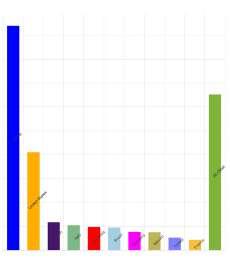
This technology is "designed to ensure superior bulk, softness, and absorbency". Hengan's announcement claims to "break through the barrier of conventional and textured tissue in the Chinese market, aiming to manufacture top quality structured tissue with the highest bulk, softness and absorbency properties" — which is not as surprising as it may first appear. Consumer kitchen roll towels are becoming more popular with consumers in the big coastal cities. Since China must import pulp, this technology will help with the efficiency in producing the most absorbency of water from a gram of pulp.
This rapid growth in tissue capacity has resulted in a very fragmented market. Figure 3 shows the current hyper fragmented share of production by the numerous Chinese tissue companies and suggests that market consolidation can be expected in the intermediate-term after the current growth phase.
China can build this colossal tissue manufacturing business due to its large population and low tissue consumption base per capita. Its population is forecasted to reach 1,397,897,720 by July 2021 according to the World Factbook. Tissue consumption per capita was estimated at 6.9kg per year in 2019, however, the country’s consumer culture is in different stages of development in other areas. The Southeast coastal areas tend to lead, and the Northeast follows with the Western regions lagging. The overall consumption rate is about one-third to one-half the South Korea and Japan rate and one-quarter the United States, making it easy to expect that China's tissue consumption and production could double in the next decade.
Figure 4 shows the population and per capita disposable income growth from 2007 to 2020. The population scale on the left (blue) is small and conceals the slowing growth rate, as China is forecasted to see only a 0.26% growth rate in 2021. This is about one-third of the population growth rate for the United States, which is expected to see a 0.7% growth rate. The bars in Figure 4 represent continued growth in consumer income to support the transition to a consumer-driven economy with increased tissue consumption. China's economy weathered the Covid-19 pandemic much better than most other countries and resumed growth quickly in a "V-shaped" recovery, making it the only major economy with growth in 2020 at 2.3% (and it’s expected to exceed 6% in 2021).
The country’s labour force unemployment rate and inflation are shown in Figure 5. Unemployment has come down to about 3.6%, while inflation was rising at about 2.8% in 2019. These positive trends also support the continued growth in tissue consumption.
China’s economy experienced the immediate impact of the Covid-19 pandemic first. Figure 6 shows the average number of cases per month as well as the cumulative total. The average infected rate was back in control by April 2020.
China became a global source of
CHINA TISSUE COMPANIES
Source: FisherSolve Next ©2021 Fisher International, Inc.

Figure 3
CHINA TISSUE PRODUCER CPI AND UNEMPLOYMENT
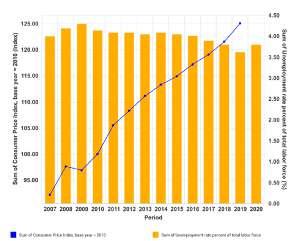
Source: FisherSolve Next ©2021 Fisher International, Inc.
CHINA TISSUE GDP/CAPITA AND POPULATION

Source: FisherSolve Next ©2021 Fisher International, Inc.
Figure 4
CHINA TISSUE ACTIVE COVID-19/CAPITA AND TOTAL COVID-19/CAPITA
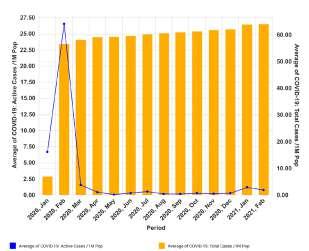
Source: FisherSolve Next ©2021 Fisher International, Inc.
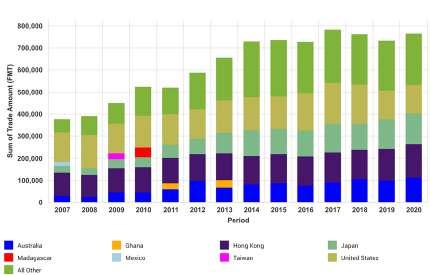

CHINA TISSUE IMPORTS TOP 10 TRADER PARTNERS
Source: FisherSolve Next ©2021 Fisher International, Inc.
Figure 7
CHINA TISSUE GRADES CHINA TISSUE EXPORTS TOP 10 TRADER PARTNERS
Source: FisherSolve Next ©2021 Fisher International, Inc.
Figure 8
TISSUE MILL FIBRE INTEGRATION

Source: FisherSolve Next ©2021 Fisher International, Inc.

Figure 9
NORTH AMERICA TISSUE MACHINE COUNT CHANGES
Source: FisherSolve Next ©2021 Fisher International, Inc.

Figure 11
Source: FisherSolve Next ©2021 Fisher International, Inc.
Figure 10
TOTAL COST BY COUNTRY
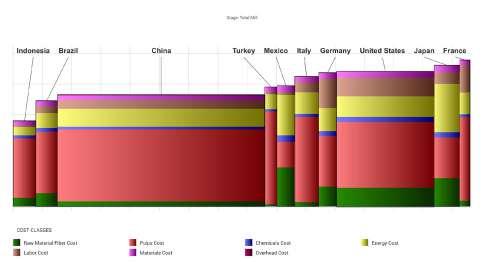
Source: FisherSolve Next ©2021 Fisher International, Inc.
Figure 12
manufactured goods over the past few decades, despite the relatively small volume of tissue exports they’ve been experiencing. Tissue is challenging to ship as both finished products and parent rolls tend to place disproportionate space to their weight. China's tissue imports are a relatively small fraction of total domestic tissue production (less than 1%), and tissue import volumes are trending downward. Tissue imports and trade partners are shown in Figure 7, and these top ten partners will be used as a comparison set for its tissue assets quality.
Tissue exports in China have grown and then levelled out during the study period, with Hong Kong, Taiwan, Japan, and the United States as the major trade partners. This trade is still a small percentage of production at less than 5%, and its
tissue business is focused on domestic consumption.
Figure 8 presents a close view of the production of tissue finished product types and the furnish used for each. Consumer
TOTAL COST BY COUNTRY
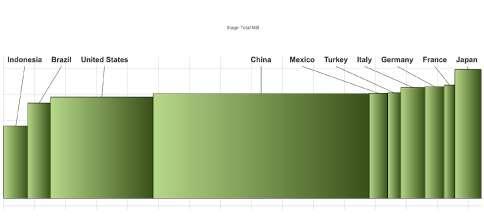
Source: FisherSolve Next ©2021 Fisher International, Inc.
Figure 13
TOTAL EMISSION BY COUNTRY
Source: FisherSolve Next ©2021 Fisher International, Inc.

Figure 14
bath tissue and facial tissue are the leading product formats. Consumer towel is small overall but reported to be larger in urban areas, and commercial bath and towel are starting to grow.
China's tissue furnish may seem strange to North American and European readers, as most of the pulp used in tissue manufacturing is imported hardwood and softwood pulp. Non-wood short and long fibre is also present from local sources such as straw and bamboo. Recovered paper or recycled fibre as deinked or not deinked represents a minimal contribution in the industrial-grade tissue wrap stock. This is very different from the commercial grades produced in North America with about 80% being recovered fibre and seen as green or saving trees. Recovered fibre is also seen as beneficial for the environment in Western Europe, but China’s regulations and customs see potential recycled fibre in producing tissue as a risk to human health and safety.
More than three-quarters of tissue mills are not integrated and instead buy pulp, as shown in Figure 9. Virgin integrated mills make up 14% of the total and most of these are hardwood-based with some straw and bamboo pulping. However, some of these other pulp mills are very small and old with renewed investment in this sector.
China has the most tissue production as well as the newest fleet of tissue machines. Figure 10 shows the relative tissue machine quality against the top ten countries importing Chinese tissue. The size of the bubble represents the relative production capacity of each country. The X-axis represents the average tissue machine technical age or how well it matches current standards. The Y-axis is the average machine speed used in production. These show that the average China tissue machine is very new but running very slowly compared to Turkey, Mexico, or Western European nations. The much older United States fleet is also much faster and Japan appears far behind.
This analysis could also be run against machine trim width to show that China's tissue machine fleet is also producing the lowest width parent rolls. Average tissue widths and speeds are expected to evolve quickly as the newer world-class machines replace some of the old, slow and narrow existing machines, which could also be a factor in the consolidation of tissue mill ownership. Chinese environmental regulations could also accelerate this as we've seen other paper grades consolidate as inefficient, polluting mills are closed.
Figure 12 shows a benchmark of the average cash cost of manufacturing for China versus the comparison set. Labour costs are low, similar to Brazil and Indonesia, while energy costs are moderate. The United States shows a higher average cost per tonne driven by increased drying of high crepe adhesive additions and nonpressed advanced technology used for the large share of ultra-premium products.
Figure 13 restates this cost in terms of average cash cost per case to reflect the lower grammage of advanced technology products at better performance levels. This adjustment shows the United States' tissue fleet at a lower average cost than China. It is not surprising to see that China will install two new TAD machines next year since fibre is an imported cost for their higher quality consumer tissue production.
Carbon Emissions from the production of tissue will be an increasingly significant factor in operating permits, the investment required, and ongoing cash costs. Figure 14 shows the cradle-to-gate carbon (CO2) equivalent tons emitted for China and the comparison set in producing a tissue ton in parent roll format. The United States and Japan have higher carbon intensities than China, Brazil has the newest pulp technology that supports carbon-neutral pulp production and France enjoys nuclear power generation. Each region can be expected to impose different types of restrictions or taxes on carbon emissions that could shift the associated cash cost curve in Figure 12.
China's tissue business continues in a rapid growth stage with larger and more technically advanced machines on the way. The smaller sizes and slower speeds of most of China's tissue fleet motivates quicker replacements as regulations change and tissue producers consolidate.
Most of this capacity is focused on domestic consumption that could easily double at the same population as a consumer-driven economy takes root. This will require importing the consumer habits for tissue use as seen in South Korea or Japan. Still, this change appears to be underway, supported by an expanding economy and consumer per capita income, and commercial tissue seems to be a growing segment as well.
An analysis of competitive positions requires specifics on tissue producers and individual machines. This article presents a static summary of China's tissue industry today. Fibre prices, exchange rates, and environmental regulations will change, providing some participants with advantages and others with new challenges. Tissue mills will continue to change hands and consolidate, and neighbouring countries may invest in tissue-making capacity, affecting China's imports and exports. Chinese consumer tissue consumption trends are still evolving, so stay tuned for rapid changes.







